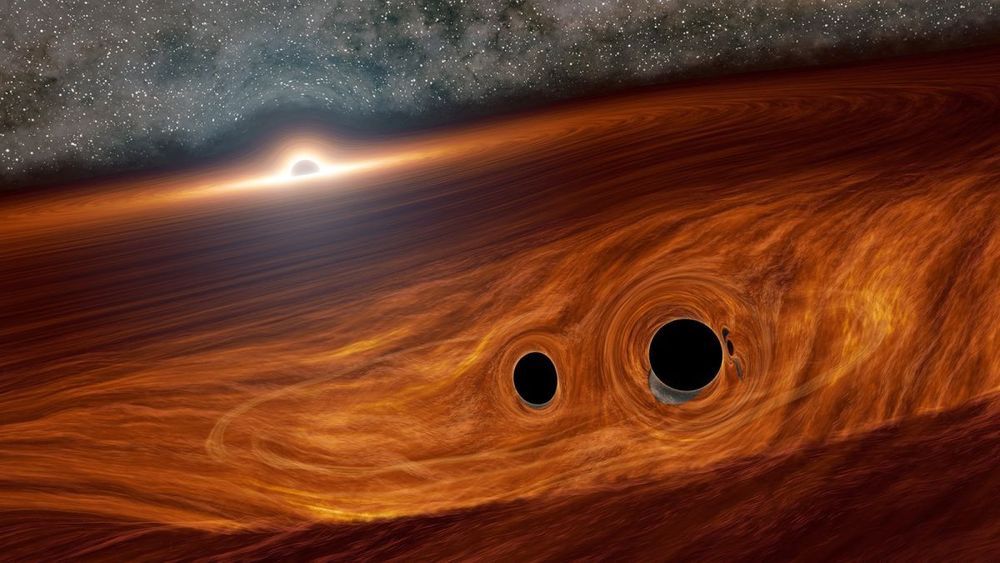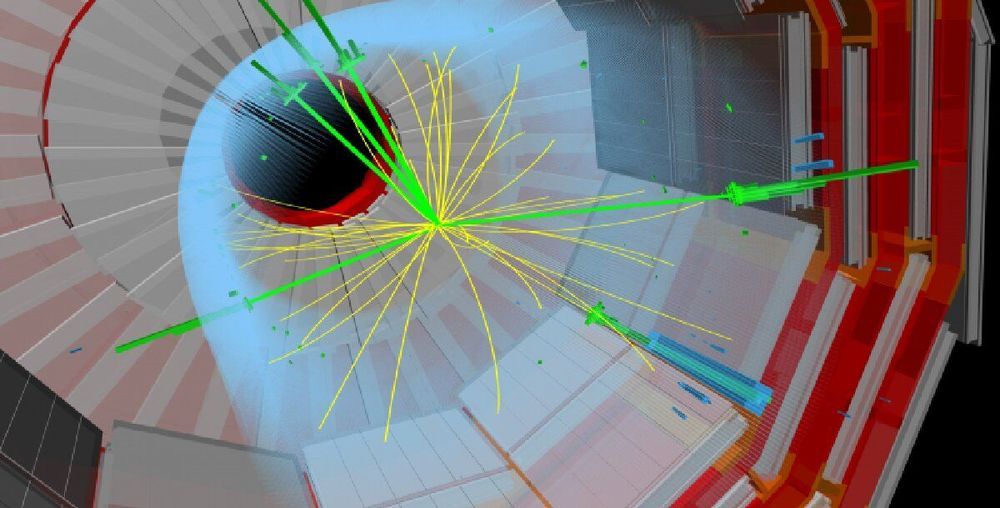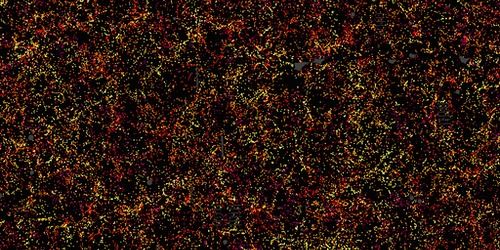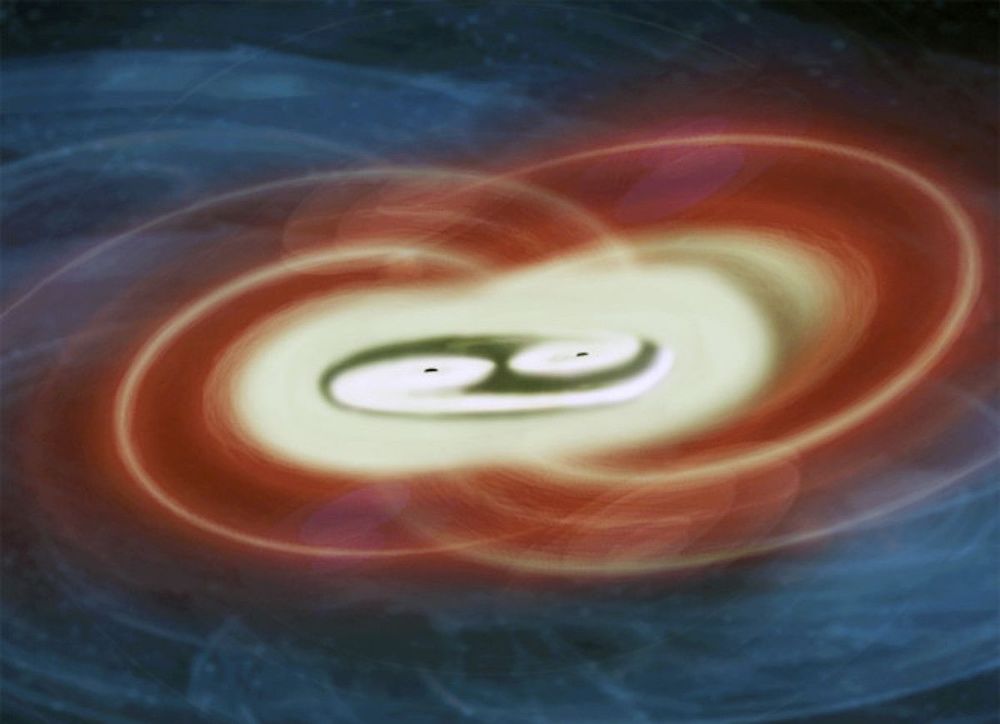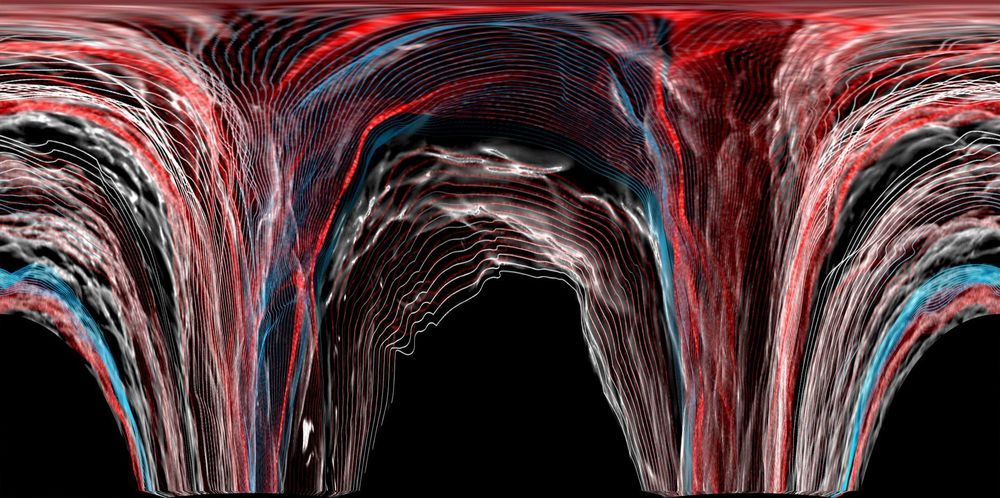Archive for the ‘cosmology’ category: Page 266
Jun 27, 2020
Mapping the Early Universe with NASA’s Webb Telescope
Posted by Genevieve Klien in categories: cosmology, evolution, mapping
Although many other observatories, including NASA’s Hubble Space Telescope, have previously created “deep fields” by staring at small areas of the sky for significant chunks of time, the Cosmic Evolution Early Release Science (CEERS) Survey, led by Steven L. Finkelstein of the University of Texas at Austin, will be one of the first for Webb. He and his research team will spend just over 60 hours pointing the telescope at a slice of the sky known as the Extended Groth Strip, which was observed as part of Hubble’s Cosmic Assembly Near-infrared Deep Extragalactic Legacy Survey or CANDELS.
“With Webb, we want to do the first reconnaissance for galaxies even closer to the big bang,” Finkelstein said. “It is absolutely not possible to do this research with any other telescope. Webb is able to do remarkable things at wavelengths that have been difficult to observe in the past, on the ground or in space.”
Mark Dickinson of the National Science Foundation’s National Optical-Infrared Astronomy Research Laboratory in Arizona, and one of the CEERS Survey co-investigators, gives a nod to Hubble while also looking forward to Webb’s observations. “Surveys like the Hubble Deep Field have allowed us to map the history of cosmic star formation in galaxies within a half a billion years of the big bang all the way to the present in surprising detail,” he said. “With CEERS, Webb will look even farther to add new data to those surveys.”
Jun 26, 2020
After 50 Years, Experiment Finally Shows Energy Could Be Extracted From a Black Hole
Posted by Quinn Sena in categories: cosmology, physics
A 50-year-old theoretical process for extracting energy from a rotating black hole finally has experimental verification.
Using an analogue of the components required, physicists have shown that the Penrose process is indeed a plausible mechanism to slurp out some of that rotational energy — if we could ever develop the means.
That’s not likely, but the work does show that peculiar theoretical ideas can be brilliantly used to explore the physical properties of some of the most extreme objects in the Universe.
Jun 26, 2020
CERN experiment makes first observation of rare events producing three massive force carriers
Posted by Genevieve Klien in categories: cosmology, particle physics
Modern physics knows a great deal about how the universe works, from the grand scale of galaxies down to the infinitesimally small size of quarks and gluons. Still, the answers to some major mysteries, such as the nature of dark matter and origin of gravity, have remained out of reach.
Caltech physicists and their colleagues using the Large Hadron Collider (LHC) at the European Organization for Nuclear Research (CERN) in Geneva, Switzerland, the largest and most powerful particle accelerator in existence, and its Compact Muon Solenoid (CMS) experiment have made a new observation of very rare events that could help take physics beyond its current understanding of the world.
The new observation involves the simultaneous production of three W or Z bosons, subatomic “mediator particles” that carry the weak force—one of the four known fundamental forces —which is responsible for the phenomenon of radioactivity as well as an essential ingredient in the sun’s thermonuclear processes.
Jun 25, 2020
A Quantum Signature for the Cosmos
Posted by Genevieve Klien in categories: cosmology, quantum physics
Certain galaxy patterns might encode whether the Universe’s primordial density fluctuations were quantum or classical in nature.
Jun 24, 2020
GW190814: Gravitational Waves from the Coalescence of a 23 Solar Mass Black Hole with a 2.6 Solar Mass Compact Object
Posted by Saúl Morales Rodriguéz in categories: cosmology, physics
R. Abbott 1, T. D. Abbott 2, S. Abraham 3, F. Acernese 4,5, K. Ackley 6, C. Adams 7, R. X. Adhikari 1, V. B. Adya 8, C. Affeldt 9,10, M. Agathos 11,12, K. Agatsuma13, N. Aggarwal 14, O. D. Aguiar 15, A. Aich 16, L. Aiello 17,18, A. Ain 3, P. Ajith 19, S. Akcay 11,20, G. Allen 21, A. Allocca 22, P. A. Altin 8, A. Amato 23, S. Anand 1, A. Ananyeva 1, S. B. Anderson 1, W. G. Anderson 24, S. V. Angelova 25, S. Ansoldi 26,27, S. Antier 28, S.
Jun 24, 2020
Gamma ray patterns hint at galaxies with two supermassive black holes
Posted by Genevieve Klien in category: cosmology
Astronomers investigating gamma ray emissions have discovered that certain active galaxies seem to be giving off bursts in regular patterns. This, the team says, could be an indication of galaxies harboring two supermassive black holes in their centers.
Conventional thinking says that lurking at the heart of most galaxies is a supermassive black hole. The Milky Way is the perfect example – Sagittarius A lies about 26,000 light-years from Earth and has a mass about 4 million times that of the Sun.
While it’s generally thought that galaxies would only host one supermassive black hole, the idea that some could have two has been theoretically possible. And now, an international team of researchers has found what could be the first evidence of this scenario.
Jun 24, 2020
Physicists Peer Inside a Fireball of Quantum Matter
Posted by Genevieve Klien in categories: cosmology, particle physics, quantum physics
A gold wedding band will melt at around 1,000 degrees Celsius and vaporize at about 2,800 degrees, but these changes are just the beginning of what can happen to matter. Crank up the temperature to trillions of degrees, and particles deep inside the atoms start to shift into new, non-atomic configurations. Physicists seek to map out these exotic states — which probably occurred during the Big Bang, and are believed to arise in neutron star collisions and powerful cosmic ray impacts — for the insight they provide into the cosmos’s most intense moments.
Now an experiment in Germany called the High Acceptance DiElectron Spectrometer (HADES) has put a new point on that map.
For decades, experimentalists have used powerful colliders to crush gold and other atoms so tightly that the elementary particles inside their protons and neutrons, called quarks, start to tug on their new neighbors or (in other cases) fly free altogether. But because these phases of so-called “quark matter” are impenetrable to most particles, researchers have studied only their aftermath. Now, though, by detecting particles emitted by the collision’s fireball itself, the HADES collaboration has gotten a more direct glimpse of the kind of quark matter thought to fill the cores of merging neutron stars.
Jun 24, 2020
LIGO and Virgo detected a black hole colliding with a mystery object
Posted by Quinn Sena in category: cosmology
The first evidence of an object more massive than any neutron star and more lightweight than any black hole has astronomers wondering what it is.
Jun 21, 2020
Lost 8 Billion Light Years of Universe Evolution Revealed by Gravitational Waves
Posted by Genevieve Klien in categories: cosmology, evolution, physics
Every year, 2 million black hole mergers are missed — Australian scientists work out how to detect them, revealing a lost 8 billion light-years of Universe evolution.
Last year, the Advanced LIGO –VIRGO gravitational-wave detector network recorded data from 35 merging black holes and neutron stars. A great result — but what did they miss? According to Dr. Rory Smith from the ARC Centre of Excellence in Gravitational Wave Discovery at Monash University in Australia — it’s likely there are another 2 million gravitational wave events from merging black holes, “a pair of merging black holes every 200 seconds and a pair of merging neutron stars every 15 seconds” that scientists are not picking up.
Dr. Smith and his colleagues, also at Monash University, have developed a method to detect the presence of these weak or “background” events that to date have gone unnoticed, without having to detect each one individually. The method — which is currently being test driven by the LIGO community — “means that we may be able to look more than 8 billion light-years further than we are currently observing,” Dr. Smith said.
